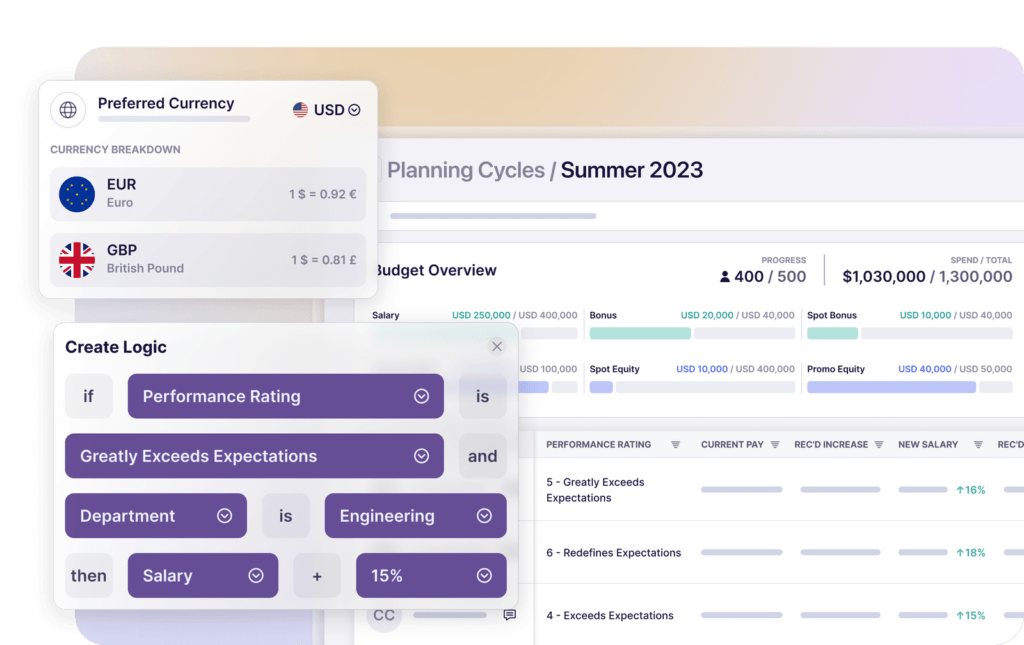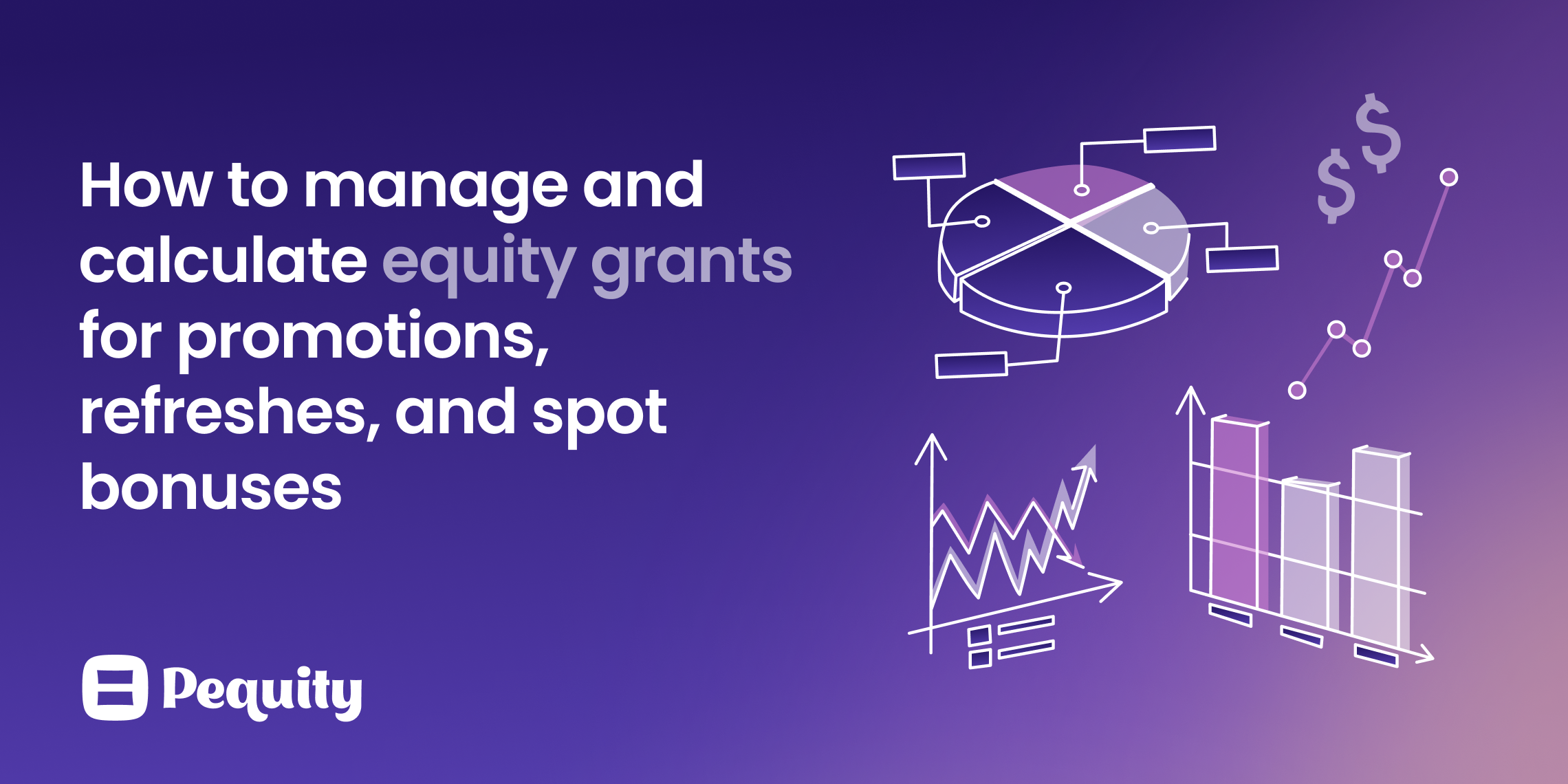Equity grants also referred to as equity compensation, are non-cash payments provided to a new hire or current employee. A common question asked by companies is “How do I calculate equity grants?” Today, we will talk about how you can calculate equity grants for various compensation lifecycle moments pertaining to current employees. We’ll cover promotion equity, equity refreshes, and spot bonus equity grants. Below is some sample logic for each put together by Pequity’s team of compensation experts.
Promotion equity
When calculating equity for a promotion, it’s important to remember this person is changing to a new level of work. This means we need to get their equity to the market rate for the level.
You can do this by taking the amount they are vesting next year and subtracting it from the midpoint of their new level’s target pay. This, however, can cause weird skews for employees who had large previous grants for performance, so we’d recommend something more algorithmic.
Rather, we recommend subtracting their current market target from their new role’s market target. This could be the midpoint of their current role, and the midpoint of their next level. This will cover the distance for them as long as the vesting is logically aligned to their existing vests.
Equity refresh
For an equity refresh, this is you often re-incentivizing your employees and also bringing them to their market rates. A fast rule for this is that refreshes should be 25% of a new hire grant (assuming the new hire grant is a 4-year grant). Really you’re trying to create a compensation plan that guarantees consistent or increasing cashflows over time. To do this, some companies will calculate a “boxcar” equity grant — e.g. they will take the annual market target, and issue the as a grant, only it appends to the “end” of their current equity vests (hence the name).
Both work, you should also just ensure all pay is at the right market rate over time.

Outsized performer/spot bonus equity grant
There are times when someone goes above and beyond in a way where the executive team wants to do something extraordinaire for that employee. In this world, execs will sometimes consider an extra equity grant.
This of course begs the question of how you calculate an equity grant of this nature; it’s not a promotion or a new hire. One way to think of this is to target the percentile that this employee’s work is situated at — so perhaps the 75th or 90th percentile. Or a way to do this is to issue an additional equity grant that is 50% of a new hire based on the belief their work would take 1.5 or more employees to replicate. With extra equity grants, the important thing is to choose a logic and stick with it to avoid pay disparity disputes later.
It’s also worth noting on all the above that you are often calculating off of the market rate, and you do not have to issue the spot equity grant in the same format as a new hire equity grant. Meaning that even if you have a 4-year new hire grant, you can choose to issue a one-time immediately vesting equity grant; a 2-year equity grant; or a 5-year equity grant.
Conclusion
Managing and calculating equity grants for promotions, refreshes, and spot bonuses requires careful consideration of various factors such as market rates, current and new roles, and employee performance. Pequity’s team of compensation experts recommends different approaches for each scenario, such as aligning equity grants to market targets, using a percentage of new hire grants for refreshes, and targeting percentiles or workload for spot bonuses. It’s important to choose a consistent and fair logic for equity grants to avoid pay disparity disputes.
If the above feels overwhelming, or you’re unsure how to create the calculations, Pequity has built-in best-practice logic that you can model, iterate and adjust as needed!
